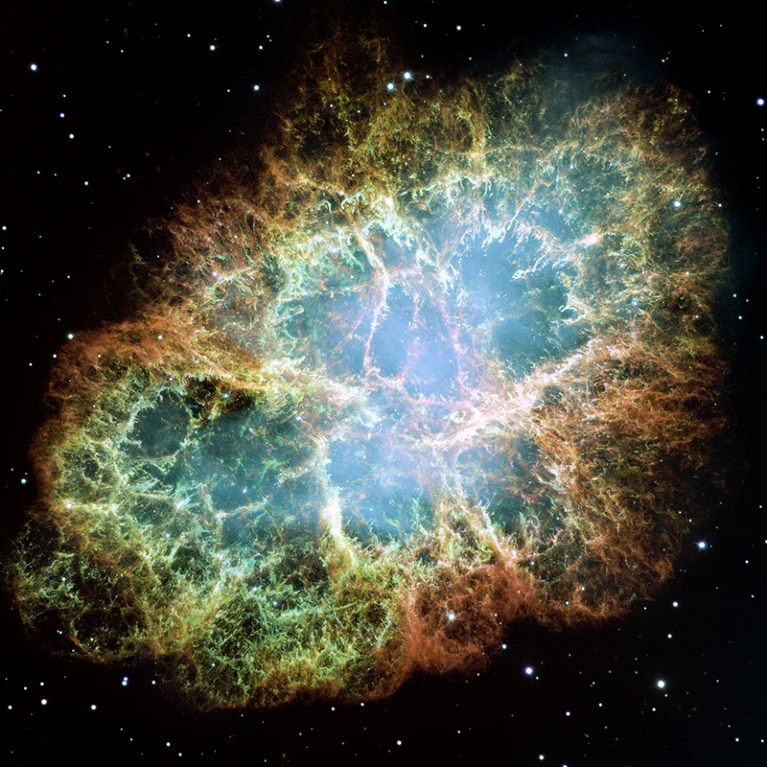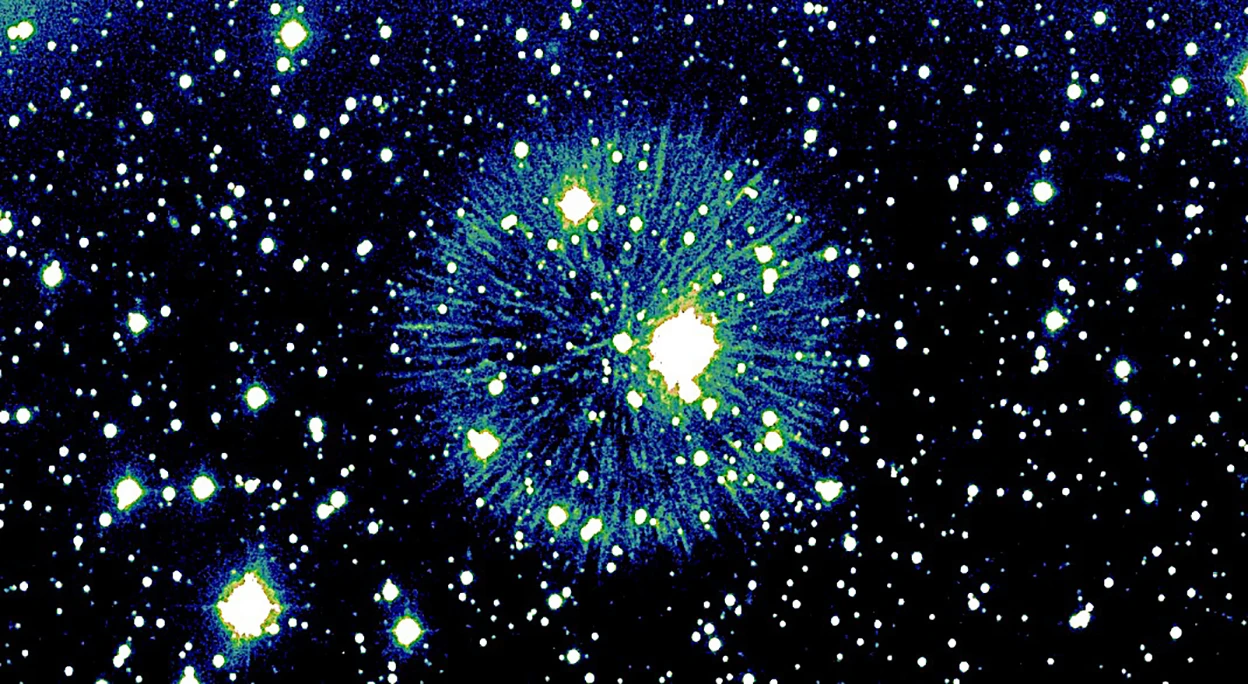Granted all these pretty pictures are focusing on a single element or combining observations in artificial colors, but WOW. It appears two white hole type stars ran into each other leaving a "Zombie Sun".

A mosaic image taken by NASA's Hubble Space Telescope of the Crab Nebula, a remnant of a star's supernova explosion.
The Crab Nebula is a more standard example of a supernova remnant, in which a dying star ejects a chaotic web of gas and dust.Credit: NASA, ESA, J. Hester and A. Loll (Arizona State University)
As they look deeper with Webb telescope images, they keep finding new phenomenon that tries to explain what is happening to us from out there. I thought that is where all the science is supposed to go tho', keeping us alive and thriving a species, here, there, everywhere out into Space.

Researchers imaged Pa 30’s fireworks display using an optical filter that is sensitive to sulfur. Credit: Robert Fesen (Dartmouth College)
The supernova remnant Pa 30, which looks almost like a firework exploding in space.
Researchers imaged Pa 30’s fireworks display using an optical filter that is sensitive to sulfur. Credit: Robert Fesen (Dartmouth College)
When dying stars explode as supernovae, they usually eject a chaotic web of dust and gas. But a new image of a supernova’s remains looks completely different — as though its central star sparked a cosmic fireworks display. It is the most unusual remnant that researchers have ever found, and could point to a rare type of supernova that astronomers have long struggled to explain.
“I have worked on supernova remnants for 30 years, and I’ve never seen anything like this,” says Robert Fesen, an astronomer at Dartmouth College in Hanover, New Hampshire, who imaged the remnant late last year. He reported his findings at a meeting of the American Astronomical Society on 12 January and posted them in a not-yet-peer-reviewed paper on the same day.
An 850-year-old firework
In 2013, amateur astronomer Dana Patchick discovered the object in archived images from NASA’s Wide-field Infrared Survey Explorer. Over the next decade, several teams studied the remnant, known as Pa 30, but the results became only more and more baffling.
Vasilii Gvaramadze, an astronomer at Lomonosov Moscow State University in Russia, and his colleagues found an extremely unusual star in 2019 at the dead center of Pa 302. That star had a surface temperature of roughly 200,000 kelvin, with a stellar wind travelling outward at 16,000 kilometres per second — roughly 5% of the speed of light. “Stars simply don’t have 16,000-kilometre-per-second winds,” Fesen says. Speeds of 4,000 kilometres per second aren’t unheard of, he says — but 16,000 is wild.
Pa 30 was again the subject of intrigue in 2021, when Andreas Ritter, an astronomer at the University of Hong Kong, and his colleagues proposed that the remnant is the aftermath of a supernova that lit up the sky nearly 850 years ago, in 11813. Chinese and Japanese astronomers observed the object for roughly six months before it faded.
During their examination of Pa 30, Ritter and his colleagues noted that the remnant’s emission spectrum contained a particular line associated with the element sulfur. Intrigued, Fesen’s group later imaged the remnant with an optical filter that is sensitive to that line using the 2.4-metre Hiltner Telescope at the Michigan–Dartmouth–MIT Observatory at Kitt Peak, Arizona.
The data they collected not only helped to confirm that Pa 30 is indeed what’s left of the supernova observed in 1181, but also yielded an image of the remnant unlike any other. It contains hundreds of fine filaments radiating outwards. Normally, researchers expect supernova remnants to look like the Crab Nebula — which looks less like a crab and more like a sea anemone, with a smooth region at the centre of an oval-shaped mass of tentacle-like filaments. They also commonly look like the Tycho Supernova, which looks like a sphere of jumbled knots.
But Pa 30 comparatively makes for “just an amazing image”, says Saurabh Jha, an astronomer at Rutgers University in Piscataway, New Jersey. “I’ve never seen anything like it before. It’s really mind-blowing.”
https://www.nature.com/articles/d41586-023-00202-1